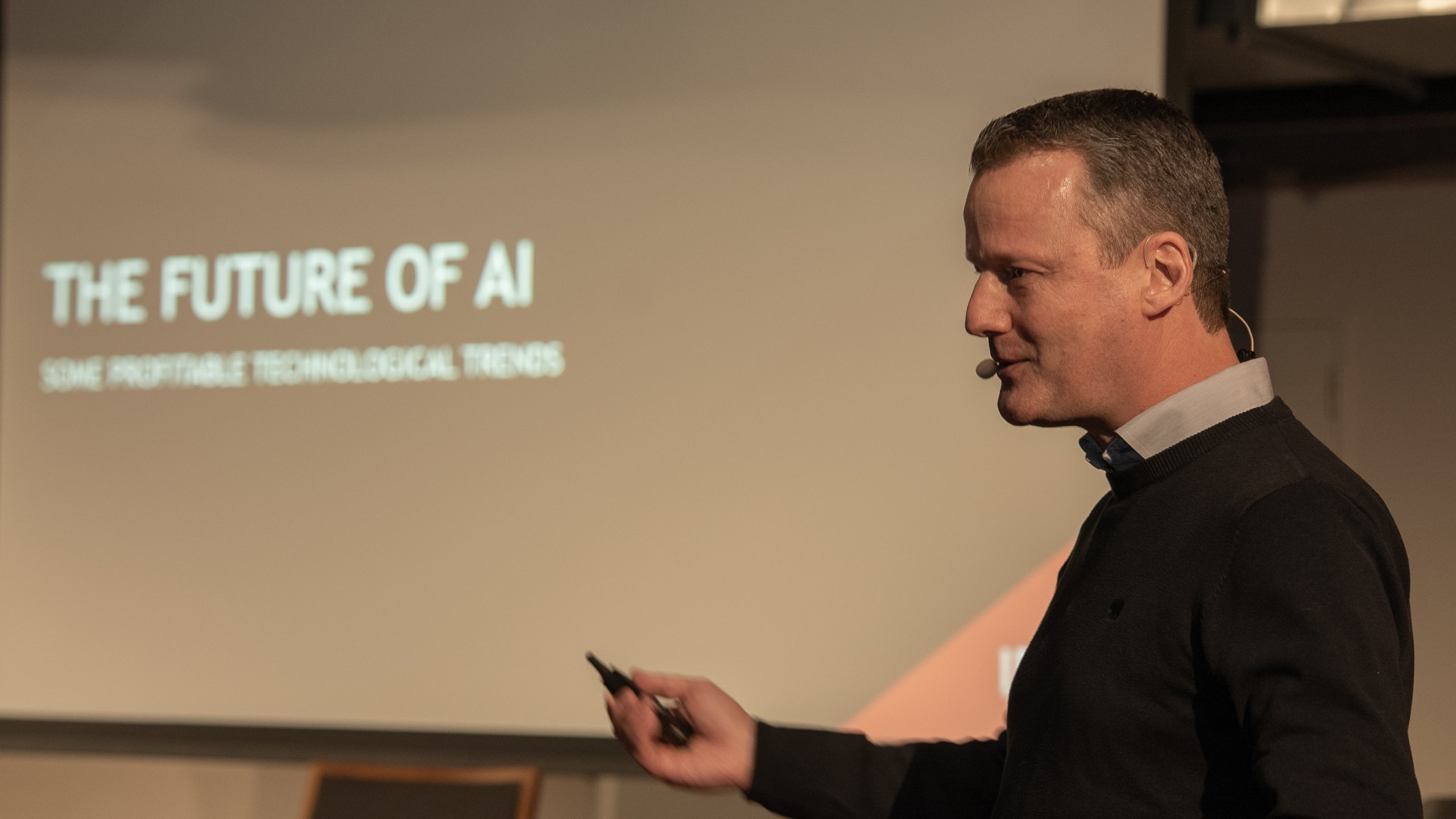Identify AI expertise gaps in your organisation
One of the main obstacles to successfully implement long-term AI solutions is a lack of appropriate expertise. This challenge spans technical skills, business understanding, and implementation experience. These are all critical elements for moving beyond pilots to production.
To help you identify some capability gaps in your organisation, reflect on the following questions:
Are your AI initiatives isolated experiments or are they integrated in your business?
Is there clear ownership and governance of the AI implementations and value realisation?
Does your organisation struggle to move from successful pilots to full-scale deployment?
Are your AI projects measured primarily on technical success rather than business outcomes and ROI?
The capability-first framework for AI value
Creating durable AI value requires you to focus on three interconnected components and one overarching element that together form the foundation for long-term success. With a formalised framework, you are more likely to report on successful implementations.
Sustainable value creation requires balancing technical excellence with business integration. Without this balance, you risk creating either technically impressive but commercially irrelevant solutions, or business-aligned initiatives that lack technical viability.

Properly aligned AI initiatives across organisations show higher completion rates and significantly greater business impact than those driven primarily by technical interest.
Establishing clear connections between AI initiatives and business objectives is the foundation for durable value and ROI. Good governance should be pragmatic, not overly bureaucratic. It enables scaling, provides the structure needed to move beyond isolated experiments to enterprise capabilities and helps you reach better results.
Three examples of key governance roles - with decision-making power - to include within your organisation:
Executive Sponsor: provides strategic direction and resources
Business Owner: ensures alignment with operational needs and meeting the needs of the business case
Head of AI: coordinates technical implementation

Organisations with dedicated internal AI capabilities report higher ROI than those relying primarily on external providers. This doesn't mean eliminating all your partnerships. You should focus on developing the internal expertise to guide implementations and reach out for external support when needed.
Successful capability building requires striking the right balance between recruitment, training, and partnership. Few organisations can recruit all the talent they need, especially in competitive markets. Instead, you can develop a capability blend that leverages:
Core team development: building essential in-house expertise
Skill enhancement: upskilling existing employees
Strategic partnerships: accessing specialised capabilities
Knowledge transfer: systematically building internal knowledge
-(1).jpg)

Moving from experimentation to systematic deployment requires a structured approach. Organisations with standardised implementation methodologies report higher success rates and more consistent value delivery.
The key lies in engaging and involving the different stakeholders in your organisation through a series of adoption-oriented activities. For example, by going through a discovery phase with four elements:
Inspiration session: build awareness and assess readiness
Play case phase: experiment on a smaller scale and gather productivity insights
AI Discovery workshops: identify all strategic opportunities and develop capability plan
Proof of Concept design & testing: validate implementation feasibility and demonstrate value
What cannot be overstated in the discovery face towards successful adoption is the importance of balancing innovation with discipline. Too much structure stifles creativity, too little leads to inconsistent results. Effective methodologies provide enough structure to ensure quality while allowing sufficient flexibility for adaptation.
.jpg)

Multi-dimensional measurement frameworks capture more value than financial-only approaches by incorporating broader business impacts.
You need to move beyond cost savings to embrace holistic value assessment. With comprehensive measurement frameworks that incorporate multiple value dimensions, you can have a more accurate picture of the true business impact of AI.
.jpg)
A typical analysis for AI value measurement incorporates four key dimensions:
Financial impact: cost reduction, revenue enhancement, asset utilisation
Customer impact: experience enhancement, satisfaction, retention
Process impact: efficiency gains, quality improvements, automation levels
Capability impact: skill development, knowledge creation, innovation capacity
Conclusion
The capability-first approach bridges the gap between AI experimentation and durable value creation. Organisations implementing this framework consistently move from one-off AI efforts to long-term, sustainable AI implementations. Durable AI value comes from systematic capability building, not isolated technology experiments. By focusing on the four key components of the framework, you can create a sustainable competitive advantage through AI implementation.
Begin with an AI maturity assessment to identify your organisation's current capability gaps and develop a roadmap for implementation. By taking a structured approach to capability development, your organisation can create AI value that grows and evolves over time.
Want to learn more about building long-term AI value for your organisation?
Contact our AI experts at BDO Belgium to discuss how we can help you assess your current capabilities and develop a roadmap for long-term success.